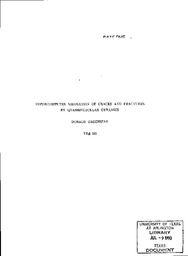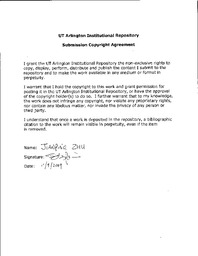
ATTENTION: The works hosted here are being migrated to a new repository that will consolidate resources, improve discoverability, and better show UTA's research impact on the global community. We will update authors as the migration progresses. Please see MavMatrix for more information.
Show simple item record
| dc.contributor.author | Greenspan, Donald | en |
| dc.date.accessioned | 2010-06-02T21:19:36Z | en |
| dc.date.available | 2010-06-02T21:19:36Z | en |
| dc.date.issued | 1989 | en |
| dc.identifier.uri | http://hdl.handle.net/10106/2276 | en |
| dc.description.abstract | **Please note that the full text is embargoed** ABSTRACT: The gross physical behavior of solids and liquids is the result of atomic or molecular reactions to external forces. Using molecular dynamics, we can study such reactions in the small, on the molecular level. In quasimolecular dynamics, molecules are aggregated into larger units, called quasimolecules, in order to simulate behavior in the large. Mass and energy conservation considerations are fundamental in this approach. In particular, we will simulate the generation of cracks in a slotted plate which, for illustrative purposes, is chosen to be of pure copper. CRAY X—MP/24 supercomputer examples are described and discussed. | en |
| dc.language.iso | en_US | en |
| dc.publisher | University of Texas at Arlington | en |
| dc.relation.ispartofseries | Technical Report;260 | en |
| dc.subject | Molecular dynamics | en |
| dc.subject | Quasimolecules | en |
| dc.subject | Supercomputer | en |
| dc.subject.lcsh | Mathematics Research | en |
| dc.subject.lcsh | Computer simulation | en |
| dc.subject.lcsh | Fracture mechanics | en |
| dc.title | Supercomputer Simulation of Cracks and Fractures by Quasimolecular Dynamics | en |
| dc.type | Technical Report | en |
| dc.publisher.department | Department of Mathematics | en |
Files in this item
- Name:
- MathTechReport260.pdf
- Size:
- 832.8Kb
- Format:
- PDF
- Description:
- PDF
- Name:
- MathTechReports_License.pdf
- Size:
- 32.25Kb
- Format:
- PDF
- Description:
- License
This item appears in the following Collection(s)
Show simple item record



